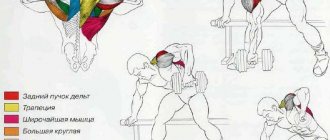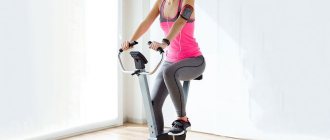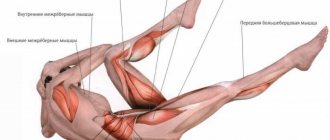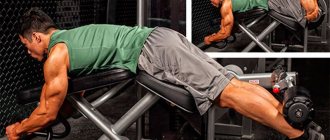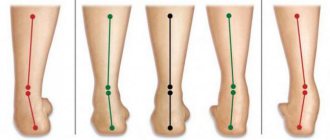Crossover and cable machines provide the variety needed for better muscle development. These exercises have everything you need and a little more.
Why move away from the concept of free weights, the alpha and omega of strength training, and introduce cable exercises? Well, aside from the fact that dropping a 20kg weight plate on your leg can cause hellish pain, there are other good reasons to expand your training horizons.
Unlike free weights, which always pull downward along the direction of gravity, cables can pull in all directions: up and down, forward and backward. This kind of variability opens the door to a completely new world of more effective muscle development.
Standing crossover curls with an EZ bar are a little different than standing curls with an EZ bar. The incline crossover crunch recruits the upper chest muscles a little differently than the incline dumbbell crunch. Raising your arms in front of you on a block is also a little different from lifting dumbbells in front of you.
Let's look at 10 cable machine exercises and talk about why they should be part of your workout routine.
Pull on the lower block (horizontal pull)
Why on the list: It’s not for nothing that the lat pulldown is considered one of the main exercises for back training. Multi-joint exercises like this recruit more muscle groups and allow you to lift more weight. Unlike single-joint movements, they signal the body that it is time to increase the secretion of growth hormone and testosterone, which equates to more efficient muscle development. In addition, in this exercise you can use different grip options - narrow, wide, forward and reverse, which makes it possible to work a muscle group in many different ways in one exercise.
In training: Place horizontal rows towards the end of your back workout. The first half of the training session should consist of deadlifts, bent-over rows and/or T-bar rows, and then you can move on to exercises on cable machines. To increase your range of motion, try doing lat pulldowns with one arm.
Execution technique
As I said earlier, there are several options for performing the exercise.
Dynamic
That is, we make the movement not only using the latissimus muscles and shoulder blades, but also include the shoulders a little in the work. It looks like this. When returning the shoulder blades to their original position, we bring the deltoids forward a little, trying to bring them together in front. Thus, we stretch the lats more strongly and can work through the full range of motion. This will activate more muscle fibers in movement. But there is also a drawback to this. When a muscle is stretched, it relaxes a little and our lats lose their load for a while. Some professionals lean forward a little more and help themselves with their lower back to take as much weight as possible. This is a very risky technique and can be classified as “cheating”. Beginners are strictly forbidden to do this! And in general, if you are not sure that you can do everything correctly and not hurt your back, then it is better to refuse such an adventure.
Static
This option, in my opinion, works the back muscles better, since we constantly keep them under load (static). It looks like this. Just like in the previous version, we pull the block towards us, but when returning to the starting position we do not bring our shoulders forward. Of course, this way the lats stretch less, but they do not go into a relaxed mode. If you are a beginner, do only the static version of the lower block row. And after a while, once you learn the correct technique, you can try the dynamic version and decide which one works best for you.
Initial position
First you need to decide what type of exercise machine you have. There are those that have adjustable cable height or seat height. If you have one, then you are lucky. Install the cable so that it is perpendicular to the area to which you will pull the handle. In our case, this will be the middle of the abdomen.
If your exercise machine is not adjustable, then hope that it will fit your height. Basically it is made for the average person. Therefore, there should be no problem with the cable height.
For those who do not have this simulator (this happens extremely rarely) or the cable height is not suitable. The only alternative would be to perform lat pulldowns in a crossover. Simply install the block to the height you need. Sit on the floor and do this exercise.
Having decided on this point, we can now proceed directly to the starting position.
- Take the handle you need and attach it to the cable using a special carabiner.
- Set the limiter to the desired weight.
- Grab the handle and sit on the bench. Place your feet on the special foot rests and bend your knees slightly. The main thing is not to sit too far away, as this will make it more difficult for you to maintain a bend in your lower back.
- Lean back until your body is parallel to the rack of the machine.
- We keep our back straight, there is a slight arch in the lower back, and our chest is pushed forward.
- The arms are fully straightened and extended forward.
Execution technique
- Take a deep breath and as you exhale, pull the handle towards the middle of your abdomen. That is, we begin to slowly move our elbows back. Thus, we will bring the shoulder blades towards each other and pull the cable along with us.
- Stay in this position for a while and squeeze your latissimus muscles properly. Then, while inhaling, we return to the starting position.
If you perform the exercise in a dynamic version, do not forget to bring your shoulders forward.
There are a few more technical points. They concern variants with wide hand placement. In these variations, we will move our elbows out to the sides a little more.
Lower pulley to the chin
Why it's on the list: On shoulder day, the chin pulldown is a great opportunity to target your middle delts, especially if you're using a wide grip. You can slightly increase the weight when performing the exercise while standing, because in this position it is possible to connect the auxiliary muscles. Or you can increase isolation by performing horizontal chin rows: lying on the floor in front of a pulley, or sitting in a lat pulldown machine. Use a handle with rotating handles to avoid putting unnecessary strain on your hands.
In training: Introduce chin rows after heavy overhead presses and before moving on to single-joint movements for the middle delts. If you want to finish off your middle deltoids, you can make this exercise the final one and use drop sets.
Upper block pull
Why it's on the list: The lat pulldown forces your entire body to work in a vertical plane, whereas with conventional rows (dumbbells or barbells), you typically pull the barbell perpendicular to your torso. Again, don't be afraid to experiment - attach different handles to the block and use different grip options.
In training: Some people like to use lat pulldowns to warm up their shoulder joints because the movement has a large range of motion. But there are other ways to incorporate lat pulldowns into your training program. Unlike pull-ups, you can easily increase the load by rearranging the pin in the weight stack, thereby adding a few heavy sets to the beginning of your back workout.
Or, after warming up, you can move on to heavier exercises with free weights, and then finish off your muscles with lat pulldowns at the end of the workout.
DIY strength trainer
The sports equipment of any gym consists of a certain set of exercise machines aimed at developing certain muscle groups. Many drawings for self-assembly of strength training equipment are presented on various websites. Let's look at an example of how to make a bench press.
To make a bench frame, you need a metal strip 4 cm wide and 4 mm thick, as well as a 2 mm thick profile pipe and a 32 mm metal corner. As a rack, you can take a pipe measuring 40x40 to support the weight, as well as connectors measuring 30x30. For a bench you will need a pipe measuring 40x40, and for a seat with a back - a corner.
In addition, to assemble a sports simulator, you will need measuring devices, including tools for further metal processing. First, you should cut the profile frame, as well as the corner into pieces and drill all the necessary holes.
Having prepared all the necessary materials, you should proceed directly to assembling all the parts. Those connections that bear the main load during exercise must be welded. The remaining parts that serve as adjustment are connected to each other with bolts. After this, the structure is primed and painted.
DIY strength trainer
When starting the final assembly of the bench, you should prepare the load-bearing part of the backrest, as well as the seats, securing them to the frame of the bench. Take 2 USB panels, the thickness of which should be 2 cm, as well as foam rubber and leather substitute for upholstery.
Thus, making a sports trainer yourself is not as difficult as it seems at first glance. The main thing is to draw up the drawing diagram correctly.
Standing bicep curls
Why it's on the list: There are plenty of ways to add variety to bicep curls on arm day, but this one is our favorite because it allows you to add new variations to the exercise by changing your body position relative to the block or by changing the height of the block itself. If you have had shoulder injuries, you can do biceps curls with one arm - this will give you the maximum freedom of movement in the joint possible for all biceps exercises.
In Training: Lumbar curls are especially good when you start to reduce the relative intensity of your workout. You can put quite a lot of weight here, but be careful not to use cheating to lift the block as fatigue accumulates. If you start using cheating in a single-joint movement, your body will begin to bend, which will increase the risk of injury.
What does exercise with ropes give?
The main advantages of working with ropes:
- Development of explosive strength and the ability of muscles to contract at maximum speed.
- Involvement of a huge number of muscle fibers (maximum complex and volumetric movements).
- Speed and coordination training.
- Improved neuromuscular connection.
- Development of endurance (due to which ropes are popular not only in CrossFit, but also in any contact sports).
- Engagement of stabilizer muscles.
- Well suited for functional training and fat burning due to huge energy consumption and calorie consumption.
The ropes themselves do not provide much growth in muscle mass when it comes to hypertrophy. But if the main goal is the development of hardy, natural muscles that are involved in work as quickly as possible, then ropes will be an excellent choice.
Bringing hands together in crossover
Why it's on the list: Like the bench crunch, the crossover variation is a great single-joint chest movement because you can easily vary the strength and direction of the resistance. Set the block as high as possible and you will get the perfect exercise for the lower chest. Fix the block at the bottom point and use scooping motions to work the top bundles, or use any of the intermediate positions. To get even more options, adjust the trajectory and change the point where your hands meet.
In training: Crossover crossovers are usually performed last or second to last in training, unless you are using pre-exhaustion. If you include two single-joint exercises in your chest workout, try to do them so that they work the pectoral muscles from different angles.
Triset for shoulders (raising arms to the sides, forwards and bending over)
Why on the list: you’re familiar with the “two for the price of one” principle, right? So, here you get three for the price of one. Cable machines are very good when it comes to isolation exercises for the delts. With this triset, you can target each head of the deltoid without ever releasing the handle. You do lateral raises and bent over lateral raises, and then raise your arms in front of you either with one hand or with both hands at once. Combining movements into a triset will provoke a powerful pumping of the deltoid muscles.
In training: Typically you'll put single-joint delt exercises at the end of your training session, but within a triset the choice is yours. Change the order of its components so that all heads of the deltoid muscle receive the same load.
Crunches on a block
Why it's on the list: Unlike bodyweight crunches, cable crunches allow you to vary the level of resistance and train for as many reps as you want, based on your priority goals. Moreover, you can perform this exercise standing or on your knees to shift the focus to the upper abs. Or you can focus on the oblique abdominal muscles: to do this, turn sideways to the block and do crunches with one hand.
In Training: Perform these crunches first or second in your ab workout to make the exercise as hard as possible and reap maximum dividends. You can also reduce the weight and do more repetitions, but in this case it is better to move the cable crunches to the end of the workout.
How to choose a rope for CrossFit
Almost all ropes are relatively standard, so only those models that are not originally intended for crossfit or functional training (for example, school equipment) can differ.
When choosing, the following criteria are taken into account:
- Length – the longer, the stronger the load.
- Flexibility – necessary for transferring force (heavy ropes not intended for such work will slow down the athlete).
- Weight – the heavier, the greater the load.
- Material – mainly determines the wear resistance and service life of the projectile.
The standard weight for CrossFit is 40-48 mm in diameter, which allows you to get a specific weight of 0.5 kg per meter. In this case, you can easily track progress due to the length of the projectile used.
Length standards:
- 9 m – beginners and girls with zero level of physical training.
- 12 m – beginners and girls with training experience.
- 15 m – women with a high level of physical fitness, men with training experience.
- 20 m – advanced and professional level athletes.
- 25 m – top athletes, strongmen, etc.
When choosing, you can give preference to both products made from natural materials and modern synthetic analogues, which are in no way inferior and often have greater wear resistance.
8. Triceps extensions on the block
Why on the list: the good thing about this exercise is that it allows you to shift the focus to the long head of the triceps, and getting into the starting position is easier than when working with dumbbells or an EZ bar. You can add variety by performing overhead triceps extensions while standing or on your knees. Both exercise options can be done with one hand.
In Training: If you follow the classic “multi-joint first” paradigm for triceps training, you can do this movement after the base at any time. You'll likely want to perform this long head exercise before light-weight movements such as reverse-grip lat pull-downs or bent-over push-ups.
9. Shoulder internal/external rotation
Why on the list: You may think that rotator cuff training is a waste of time, but that has nothing to do with the truth. This conglomerate of muscles and tendons works in unison with the deltoid muscles and provides stability to the shoulder joints. And because the shoulder is a ball-and-socket joint, stability allows it to function safely in all planes.
The problem starts when you focus too much on your deltoids and don't do anything for your rotator cuff. When this happens, you create an imbalance between muscle groups that leads to shoulder health problems. If you want to do internal/external shoulder rotations with dumbbells instead of cables, do not do the exercise while standing; instead, lie on the bench on your side so that the direction of the gravity vector relative to your torso is the same as in the direction of the crossover's thrust.
In training: during the warm-up, the working weight should be very light, there should be 15 repetitions per set, and they should be performed according to all the rules of technique!
Recommendations
Rope training is as flexible as possible. You can ensure load progression in the following ways:
- By the number of swings (repetitions) in the approach, but for such work only multi-repetition sets are effective. That is, from 20 repetitions and above.
- Timed is a particularly useful mode for developing explosive strength (for example, using the Tabata protocol).
- Until failure or complete fatigue.
For maximum effectiveness, it is recommended to use exercises with ropes in a separate workout, for example, choosing one complex for 5-15 minutes (depending on your level of training). However, they can also be effectively combined with any other types of training: machines, free weights, crossfit training and others.

